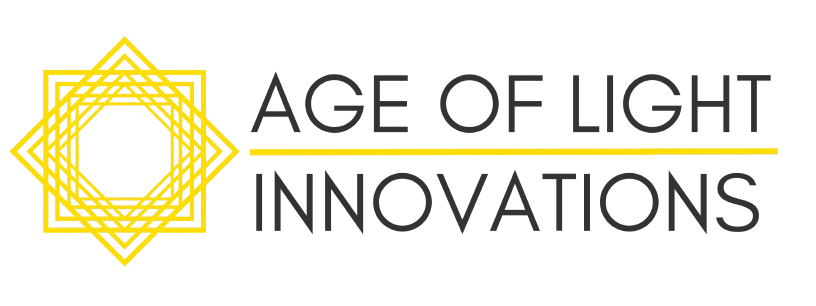Counting down to the Care Show!
I’ll be banging on about the business case for circadian lighting in residential care – and of course hoping to win the National Care Forum Innovation Challenge (please come along to stand C10 and say ‘hello’ and vote for us too!)
But the real win will be the opportunity to introduce the brilliant Jo Cheshire of WCS Care, who will be explaining why she and Ed have invested in this approach for new build and retrofit.
She’ll share some of the remarkable results they’ve been seeing – from eliminating sundowning and antipsychotic use to calmer nights and happier staff.
Please join us – The Care Show Birmingham 2025 programme.
International day of older persons – coming of age
‘Older’ – than who?
The United Nations defines older people as those aged 65 or older – International day of older persons 2024: ‘Ageing with Dignity: The Importance of Strengthening Care and Support Systems for Older Persons Worldwide’.
As I clock up the birthdays, it seems to me that biological rather than chronological age may be a more relevant measure of how old we feel – a difference that seems to become even more stark over time as underlying health conditions and lifestyle choices take their toll – Your Biological Age vs. Chronological Age: Why It Matters.
Another metric adopted by policymakers struggling to get to grips with the increasing demands of an ageing population is ‘healthspan’ – or years of healthy life. Although lifespan has increased by almost 30 years since the mid 20th century, healthspan has not kept pace. Globally, the USA suffers from the greatest gap with an average of 12.4 years burdened with disease at end of life – Global Healthspan-Lifespan Gaps Among 183 World Health Organization Member States.
Perhaps it’s the Google filters noticing my birthdate, but I’m bombarded with anti-ageing protein smoothies and biohacking bodybuilding tips.
But one thing that doesn’t seem to get so much press is light exposure.
And yet, a recent Biobank study of 89,000 Brits found that light exposure predicts your risk of dying in the next eight years – more light during the day reduces your risk, while those exposed to the brightest light at night had a 21 – 34% higher risk of premature mortality – Brighter nights and darker days predict higher mortality risk: A prospective analysis of personal light exposure in >88,000 individuals.
Daylight is best, but a therapeutic dose of artificial light can help to boost sleep, mood and cognitive function, as this paper on Bright Light Therapy explains – The Effects of Light Therapy on Sleep, Depression, Neuropsychiatric Behaviors, and Cognition Among People Living With Dementia: A Meta-Analysis of Randomized Controlled Trials. Given that both regular sleep and late-life depression are both risk factors for mortality in older adults, that’s got to be a good thing – Sleep regularity is a stronger predictor of mortality risk than sleep duration: A prospective cohort study, Predictors of mortality in people with late-life depression: A retrospective cohort study.
Many of my friends avoid the sun – it makes us wrinkly after all.
But as this research explains, in moderation, getting enough sun to synthesise Vitamin D is important too. As we get older, we need even more sunlight to maintain a healthy dose – Benefits and Risks of Sun Exposure to Maintain Adequate Vitamin D Levels.
So I, for one will keep it simple and celebrate getting older every day.
Walking the walk
Notes from our pilot installation at the St Monica Trust Cote Lane site in Bristol…
Some things we knew- and some lightbulb moments
- Sleep is top of everyone’s agenda – although few link light and the body clock.
It’s harder to get out of bed – you’re most likely to feel stiff first thing, and that gets worse with age – Time of Day and Muscle Strength: A Circadian Output? Even a premium retirement living unit simply doesn’t deliver the quantity and quality of light we need to rise and shine. A retrofit really could help. - No ‘one size fits all’, especially for couples living with different health conditions.
Zoned lighting and heating, and simple moves like integration with the TV (so he can tune in without her moving out) could help us live happily together for longer. - Controls count – it’s a solid ’no’ to knobs that demand a tight grip – especially close to the floor, switches that light up a whole corridor when just one bulb will do and stay on when someone pops in to feed the cat and forgets to turn them off. And a warm ‘yes’ to presence sensing, night-time dimming, energy-saving remote controls – with a help line, not a QR code – so you don’t have to worry.
- Beware of big brother – but keep a watchful eye.
Valid concerns over surveillance and privacy, while recognising the need for support. Smart home automation could bridge that gap with ambient sensing and machine learning, noticing unusual patterns of activity and environmental conditions – water or gas leaks, air quality and temperature variations – without the need for cameras, alarms or routine calls – freeing time and resources for real human connection. - My home is my castle – but who owns the walls?
Residents own their flats, but the operator runs the building. So who pays for an upgrade, who’s at fault if it gets hacked, and who reaps the rewards? Where do the Facilities Management, IT and Care teams connect?
Bottom line – Light is a ‘trojan horse’ for so many conversations about how we can harness innovation to live happily together for longer – and we’ve only just begun!
Please come along to C10 at the Care Show next week to continue the conversation!

